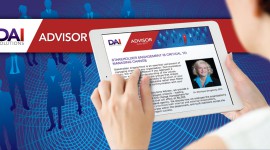07 Oct
2016
ENGAGING A DIVERSE WORKFORCE
By Kristi Kelly, Consultant
Often, leaders think that defining their strategy is the most important activity they will perform all year. But, in reality, getting their workforce aligned with that strategy is even more critical. And that engagement starts by involving the workforce in the creation of strategic goals from the outset.
Receiving feedback from employees is one of the most effective ways to determine how success can be achieved because they are the “boots on the ground,” and often have innovative and creative ideas. But even more than letting the workforce influence ideas about the organization’s strategy, the strategy must be one that employees believe in.
 It’s not enough to design the perfect strategic plan and then close the books on it for another year. Nor is it enough to have a manager meeting to relay to employees what the strategy is. Your strategy must be communicated to every employee.
It’s not enough to design the perfect strategic plan and then close the books on it for another year. Nor is it enough to have a manager meeting to relay to employees what the strategy is. Your strategy must be communicated to every employee.
Just as with cultural diversity, today’s workforce is made up of Baby Boomers, Gen Xers, and Millennials — and each generation has its own fundamental set of values, ideas about work ethic and etiquette, and their own ways of communicating. It can sometimes be a challenge to get these various mindsets on-board.
Messaging has to win over their hearts. Helping each generation understand why they should get behind a new strategy means helping them understand what’s in it for them. Gone are the days when saying “because I’m the boss and I said so” will motivate an organization to excellence.
In order for every employee to hear, understand and enthusiastically support the strategic direction of your organization, communication — through a myriad of vehicles — must occur on a continual basis. In fact, one of the key psychological factors in gaining buy-in from the workforce is frequent in-person engagement from leadership at the highest levels. The workforce may not avidly await next month’s newsletter, but they often will crowd into a room to hear what leadership has to say.
When leadership leads from the top and spreads a message that the workforce has had input into, buy-in often happens organically over time.
The development and implementation of any successful strategic plan should also involve frequent, two-way, transparent communication. If your company has properly executed your strategy and has been successful as a result, this should be communicated — loudly and often — to the workforce who helped you achieve success. This cycle of communication keeps the workforce engaged and primed to hear and support your next strategic steps.





